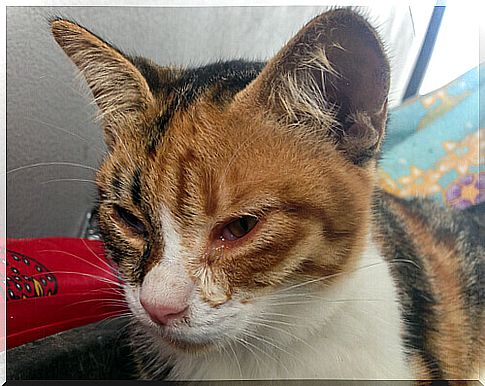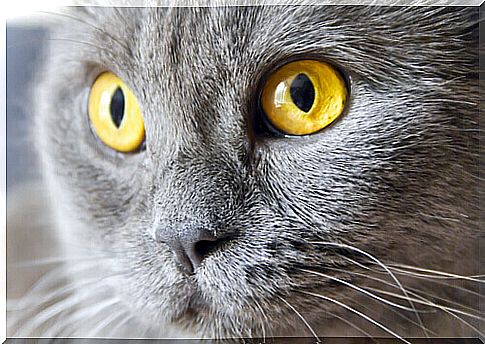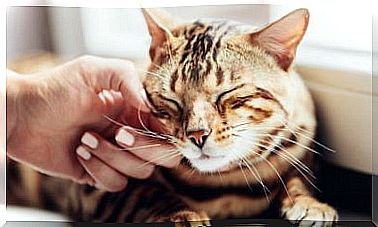Uveitis In Cats: Causes, Symptoms And Treatment

One of the most interesting anatomical elements, without a doubt, are the eyes of the felines. Their shape and color are almost hypnotic. If you have a cat at home, it will be your responsibility to take care of your four-legged friend’s visual health as well. In fact, there are many pathologies that can affect the eye. For this reason, today we tell you about one of these, known as uveitis.
What is feline uveitis?
Uveitis is an ophthalmological problem that affects cats but also other feline specimens. It is mainly associated with viral processes and high prevalence (or long lasting ) diseases , often unfortunately lethal, such as leukemia. There are four different types of uveitis in cats:
- Anterior uveitis or iridocyclitis
- Posterior or choroidite
- Intermediate uveitis
- Panuveitis
At the same time, this pathology of the uvea (the membrane of the eye) can also be related to trauma or bruises. For example, a cat that has received a fortuitous blow or that has been injured in a fight may suffer from this disorder without necessarily suffering from any disease.
Causes of uveitis in cats
In the first place it seems fair to explain what uvea is. Also defined as “uveal tract”, it is used to indicate the vascular tissue of the eye. It is a layer, a kind of immune barrier that protects the intraocular fluid.

This membrane is very delicate, and it is natural for viral disorders and other diseases to cause changes in its tissue. The most direct consequences are related to ruptures and inflammation.
Symptoms and diagnosis of uveitis in cats
If you have a domestic feline, chances are you will be able to detect the most obvious symptoms of this disease on your own. Below we will indicate the most frequent signals that will allow you to verify the presence of the problem. Go to the vet immediately, but without too many alarms:
- The cat shows discomfort in the presence of light.
- Pain or tearing.
- Reduced vision.
- Appearance of spots in the aqueous humor.
- Presence of pus in the lacrimal area or inside the eyelids.
- Changes in eye color.

As it should be, the specialist will always determine whether it is uveitis or any other ophthalmological problem, such as conjunctivitis.
Treatment of uveitis in cats
Once your vet has diagnosed your cat with this ophthalmological disorder, they are likely to prescribe appropriate treatment. The treatment of uveitis, usually involves taking two medications: a specific type, the other palliative.
Put simply, the first drug aims to eliminate the source of the problem and affects the use of corticoids. The second will serve to soothe the side effects, such as pain and possible swelling, by making the animal take normal anti-inflammatories.
It should be noted that this treatment is essential to avoid possible relapses of intraocular inflammation. As in the case of lenticular problems, or even the formation of cataracts, glaucoma, retinal detachment and, in the most serious cases, even blindness.
To be sure, if your cat suffers from uveitis, it should be emphasized that the response to these medications largely depends on the type of condition and how long it took before diagnosis.
A little while ago we looked at the causes of this eye problem. Among the various reasons that can contribute to the onset of uveitis, certainly the manifestation associated with strokes or trauma is easier to treat, as well as that which is detected early. Precisely for this reason, as owners you must always be vigilant and check every slightest change in the eye level of your four-legged friend. Observe the state of the animal every day and, in the presence of one or more of the symptoms described above, do not hesitate to consult your veterinarian immediately .









